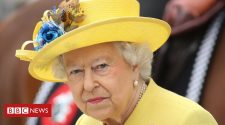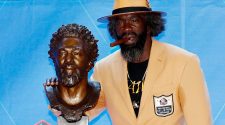Jagannath Culture -The principle of SarvaDharma samanwaya
Orissa is the land of Jagannath culture. It represents the religious worships of orissa. It has unique and valuable religious tourism resources. The state has something for everyone. The monuments- the sun temple at Konark, the Jagannath temple at Puri, the Lingraj temple at Bhubaneswar are the sacred places of Orissa attract thousand of pilgrimages from the different parts of world in recent time. The beautiful yatra, Car festivals of Lord Jagannath motivate many devotees from different parts of the world. There are many spots of Orissa, which deserve to be publicized worldwide by international tourism. The temple architect and sculpture of Orissa are world famous. Apart from Indian culture, Orissa like any other region of the country have no separate culture of own. Lord Jagannath is the presiding deity of Orissa culture. It became the symbol of unified religion and culture among the Jainism, Buddhism, shaivism, vaishnavism and Shaktism from time to time. But Jagannath is the lord of universe, almighty and omnipresent. The sacred place, Puri of Orissa is prominent as purusottam kshetra. In the Hindu belief it is one of the four centers of salvation from ancient times ,the people of India regarded four places, namely, Badrinathin the north, Rameswaram in the south, Dwaraka in the west, and Puri on the eastern sea cost as their destinations for pilgrimage. Puri was thus recognized as one of the most sacred places of India from an immemorial past. It is also known as ‘Shreekshetra1, Niladri, Sankha kshetra and Martya-baikuntha.
According to Vedas and the Puranas the Purusottam appears in the Puri. Therefore it is called Purusottamkshetra, the place of Jagannath or Purusottam, i.e., the Supreme Being or the Lord of the universe is a place of great antequity. According to old tradition, Sanskrit Brahma Purana and Scandha Purana as well as in Oriya Mahabharata of Adikavi Sarala Das and Darubrahma Gita of Jagannath Das, a Savara leader named Biswabasu worshipped the image of Nilamadhava at a secret place named Nilakandara on the eastern seashore.
The king of Malawa, Indradyumna “advanced towards Utkal to take possession of that divine Image. But Nilamadhava disappeared from his original place and floated in the sea in form of a huge log of wood.
Indradyumn engaged a carpenter to carve out images from that sacred wood inside a temple. The old carpenter agreed to make images on condition that the doors of the temple would remain closed for twenty-one days. On fifteenth day when no sound of woodcarving was heard. From inside, the queen suspected that the image-maker might be dead. She requested the king to open the door, when it was done. Inside the temple were seen the incomplete idols of Jagannath, Balab-bhadra, Subhadra and Sudarshan.The legend suggests that Jagannath was originally the God of the savaras. . The primitive races like the Savaras, Nishads and the Kiratas used to worship trees as their deities from pre- historic ages. In later times the Dravidians, and the Aryans also included tree worship in their religion, subsequently, the tree worship was transformed in to the worship of wooden images.
Be it noted that while the images of the Hindu deities are made of stone or metal, the image of the Supreme Being Purusotam Jagannath is made of wood. Since the original name of the Savara deity was Nilamadhava, the name of his new place came to be known as Nilachala.It is said that wooden idols of Jagannath, Balabhadra, subhadra and Sudarshan represent the primitive art of the savaras. Jagannath was the God of the Savaras was so deep rooted in the Oriya mind that Sarala Das described Jagannath as “Savari Narayana” in his Mahabharata written in 15th century. According lo the Jainism -Jagannath in the manner of the names of JainaTirthakaras.It is also said that Tri-Ratna of Jainism namely Right Faith, Right knowledge and Right Action are symbolically represented in the trinity of Jagannath, Balabhadra, Subhadra.The Janis believed in idol worship.
They believed used to place the images of the Tirthankars on chariot and take out in procession like the car festival of Jagannath. According to some scholars, the images of Jagannath, Subhadra and Balabhadra symbolized the Buddhist Faith in Buddha, Dharma and Sangha. It is also said that forest-dwellers of Orissa like the Savaras adopted Buddhism in Asoka’s time. By first century of the Christian era when idol worship became common among the Buddhists, the savara came to regard the image of Jagannath as the image of Buddha. In course of time the Hindus also regarded Buddha as an incarnation or Avatar of Vishnu and identified Buddha as Jagannath, The Supreme Being in this Age of Kali (Kaliyuga). Buddhism stood for a casteless society. It belived in brotherhood of all men. Purusottam kshtra is the only sacred place in whole of India where the Prasad or bhoga of Jagannath is shared under same plate by Brahmans and Sudra together. This unique phenomenon is described to the influence Buddhism under universal religion, which Jagannath stands for.
When the Surya a Dynasty came to power after the Gang as the medieval Bhakti Movement was at its height. Devotion to Krishna was the central theme of Bhakti. On account of this, Jagannath was seen as Krishna. To drive this point to the Hindu mind, was narration that when Srikrishna gave up his body after being struck by an arrow of Jarasavara, through Pandavas cremated his total remedial. But one portion burn, and floated in form of wood in the real it coming to know of in dream, king Indra dyunma order for carving out of images of jannath, Balabhadra, subhadra and sudarsan from that divine wood. To the Vaishnavites, thus it is srikrishna who has appeared as Jagannath in this kali Age.
In order to justify the presence of Balabhadra and subhadra with Jagannath it was said that Jagannath is Vasudev-Krikrishna, and, therefore Krishna’s brother balarama and, sister Subhadra have been given place with-Jagannath. Since those, three idols were considered as Buddha. Dharma and Sangha by the Buddhists, and Sudarshan was described as a symbol of Buddha’s Dhrma-Chakra the Vaishnavas identify Sudarshan with Krishna’s ‘Sudarshan Chakra’
The significance of the Jagannath culture lies in the fact that it has absorbed all religions and all religious believes within itself. Within its all-embarrassing fold, one finds the essence of the evolution of Indian religions and cult. The unique feature of Hinduism from ancient Limes was die freedom of every individual to think of God in his own way. Every group, community or caste was also given freedom to develop own religious tradition. There was neither rigidity nor intolerance- the Hindu way of life.
“In this atmosphere of perfect freedom and liberalism that there developed in India numerous religious customs and systems, mode£ of worship and prayer higher human ideal; as well as blind superstitions in this over all background ‘the culture of Jagannath developed itself such a way as 10 accommodate all varieties of believes within itself. Diversity in unity and unity in diversity is prime character of Jagannath Call The Supreme Bering One and the same; Jagannath is the Lord of the- Universe. In spume of outward differences m human existence, Jagannath is the One God for all.
Jagannath is represent in Vedic Brahmarfiim, Jainism, Buddhism, Puranic Hinduism, Saivism, Saktism, Taoism and Vaishnavism in various
phases of time. Though in shape of wooden idols, Jagannath is that Absolute Being who is beyond description, beyond form, and beyond comprehension. He Is the Savior of all, irrespective of caste, color orfreedom of man.
The Universality of Jagannath has carried it’s: western thinkers of the present day. They find in the Jagannath Cull the highest spiritual ideals and the deepest feelings of demotion’ mixed with outward ceremonies to satisfy the common mind. The Cult of Jagannath is thus a gift of Orissa humanity to satisfy its desire for spiritual peace, social harmony and universal divinity.
References: http://www.orissatourism.com
: History of India by R.C.Majumdar
: Indian History by M.N.Das
: Manorama Year Book.
: The Rough Guide of India by David Abram and others.
: History of Orissa by J.pattanaik
: History of Orissa by three authors
FROM:
Mr. Ramesh Chandra Padhy
Lecturer in Tourism Management
VIHTM, RAJKOT, GUJARAT
E-mail: [email protected]














